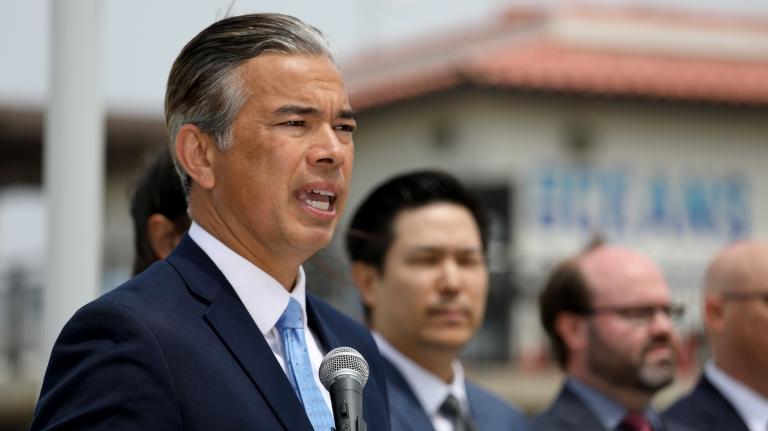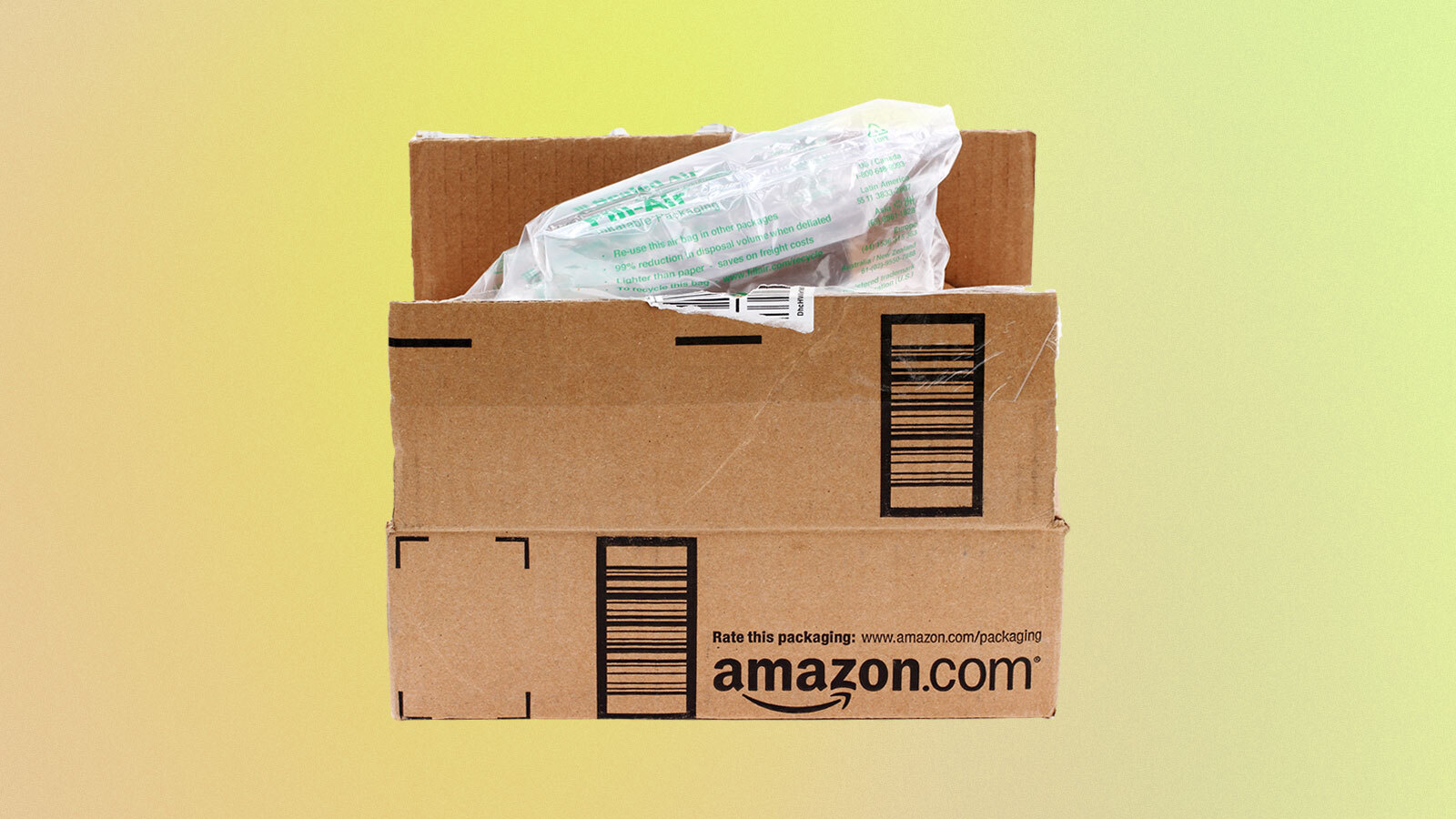After years of pressure from environmental advocates, the global retail giant Amazon announced last week that it has eliminated plastic air pillows from its global network of “fulfillment centers,” as Amazon calls its warehouse and distribution facilities. Around the world, products inside the company’s packages are now cushioned by paper-based padding that can be collected in curbside recycling programs.
“We are committed to improving how orders are shipped, for the good of customers and the planet,” Amazon wrote in a blog post.
The announcement represents the fulfillment of a promise Amazon made in June to work “toward full removal” of plastic air pillows from North America by the end of the year. At that time, the company said it had already replaced 95 percent of its air pillows across the continent with paper filler. Years before that, in 2021, Amazon eliminated plastic air pillows in Australia, and in 2022 it did the same for orders shipped from its warehouses in Europe.
Oceana, a nonprofit ocean advocacy group, has dogged Amazon for several years over its use of plastics, largely through a series of reports quantifying the company’s overall plastic footprint and its contribution to aquatic plastic pollution. Matt Littlejohn, Oceana’s senior vice president for strategic initiatives, said Amazon’s announcement is “actually quite significant,” even though the phaseout doesn’t apply to orders shipped by third-party sellers. Amazon hasn’t disclosed what fraction of its sales are fulfilled in that way. “It’s great news for the oceans and for the globe in general that the world’s biggest e-commerce company did this,” Littlejohn said.
Still, Amazon continues to use tens of thousands of tons of plastic every year in other forms of packaging — much of it thin, filmy plastic used in delivery bags and padded mailers. Plastic film is not only virtually impossible to recycle, but also the most common form of plastic litter in coastal waters and the most lethal type of plastic to large marine animals. Oceana and other environmental groups say the company should strengthen its plastic-reduction promises by setting deadlines to move away from all types of single-use plastic packaging, and scaling up reusable alternatives.
“We want the company to make a commitment to do more,” Littlejohn told Grist. He said Amazon’s actions could influence other large retailers to also reduce their plastics use.
Amazon is one of the largest companies in the world, with an estimated value near $2 trillion and annual revenue above $600 billion. It operates in 21 countries and ships to many more. In the U.S., Amazon controls nearly 40 percent of the e-commerce market.
So far, Amazon’s greatest progress on plastic reduction has happened in international jurisdictions, potentially due to stronger regulations on single-use plastics. The company’s warehouses in India have been plastic packaging-free since 2020, and its European distribution centers stopped using plastic delivery bags in 2022. Those changes contributed to a 9 percent self-reported decline in global plastic use between 2022 and 2023, according to an Amazon spokesperson.

Plastic reduction has been slower in the U.S., perhaps because of the sheer size of its largest market. Oceana has estimated that Amazon generated 208 million pounds of plastic packaging trash in the United States in 2022 — about 10 percent more than the previous year — although this doesn’t account for the company’s most recent efforts to transition to paper. In its recent blog post, Amazon said it has now retrofitted more than 120 automated packing machines across the country so they can make paper bags, rather than plastic ones.
Amazon also hinted in its 2022 sustainability report that it was “phasing out padded bags containing plastics,” presumably referring to its ubiquitous blue-and-white mailers. Littlejohn said Amazon should make this commitment more precise by clarifying its geographical scope and a timeline for accomplishing it.
The company also said in its most recent sustainability report that it’s “working to reduce our use of single-use plastic packaging in favor of household-recyclable alternatives.” Littlejohn said that the emphasis on curbside recycling — instead of specialty take-back programs at retail stores — is meaningful. Currently, the company’s blue-and-white mailers feature a label directing customers to “store drop-off” recycling receptacles at locations like Kohl’s, Safeway, and Stop & Shop. But investigations from the media and environmental groups have shown that plastic collected in these receptacles is often sent to landfills and incinerators, rather than to a recycler. Plastic film that does get reprocessed is downgraded into nonrecyclable products like deck chairs.
In response to Grist’s request for comment, an Amazon spokesperson pointed to previously announced plastic reduction efforts, including the complete elimination of plastic packaging from two U.S. distribution facilities.
“We recognize the importance of reducing single-use plastic, in the U.S. and globally, but this can’t be done overnight,” the spokesperson wrote in an email. They went on to say that Amazon is “obsessed with getting this right for customers, and we’re incredibly proud of the progress so far.”
Amazon also said in its blog post from last week that its first priority is “to remove packaging altogether,” meaning it tries to ship products in their original packaging rather than adding Amazon-branded sleeves, bags, boxes, and padding. As of December of last year, Amazon was shipping one-third of its sales in North America without any additional packaging, and it said it would increase this fraction to two-thirds by December 2024.
As You Sow is a nonprofit shareholder advocacy organization that has filed several resolutions at Amazon asking the company to disclose and reduce its plastic packaging footprint. Conrad MacKerron, the organization’s senior vice president, noted that there are still plenty of opportunities outside of Amazon’s e-commerce business to cut down on unnecessary plastic packaging. For example, he said, Amazon sells many private-label food and beverage products that are packed in flexible plastic, like bags of nuts and candies. These products contribute to plastic pollution, even if they’re shipped to buyers in a paper envelope.
Amazon also owns Whole Foods, one of the largest grocery chains in the United States, where entire aisles of products are sold in flimsy plastic packaging that is virtually impossible to recycle. Many of these products are sold under the Amazon-owned label 365 by Whole Foods Market. “Unlike PET bottles, that flexible packaging cannot be recycled really anywhere in the world at this point. All of that goes to the landfill,” MacKerron said. He said he’d like to see Amazon “reevaluate” its grocery store plastic use, “given that there’s nothing on the horizon that’s going to provide a recycling option” for it.




